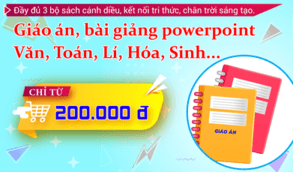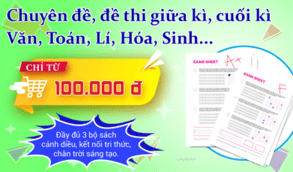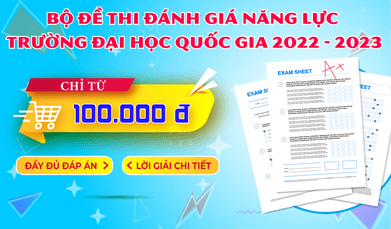200+ Trắc nghiệm Lý thuyết dịch (có đáp án)
Tổng hợp trên 200 câu hỏi trắc nghiệm Lý thuyết dịch có đáp án với các câu hỏi đa dạng, phong phú từ nhiều nguồn giúp sinh viên ôn trắc nghiệm Lý thuyết dịch đạt kết quả cao.
200+ Trắc nghiệm Lý thuyết dịch (có đáp án)
Chapter 1: Current views on translation and the role of contextual analysis in translation
Câu 1: The original text may deal ……….. ………….any subject from general philosophical principles or postulates to minute technicalities in some obscure field of human endeavour.
A. With
B. About
C. Of
D. For
Câu 2: Each of these forms of literary activities comprises a number of subgenres and the translator may ……………………………one or some of them in accordance with his talents and experience.
A. Come in
B. Specialize in
C. Put in
D. Give in
Câu 3: Translation …………………… is an academic interdiscipline dealing with the systematic study of the theory, description, and application of translation.
A. Studies
B. Work
C. Learn
D. Tutoring
Câu 4: The concept of context has been extensively studied by different linguists from …………………………………….., such as pragmatics and systemic-functional linguistics.
A. Different minds
B. Different thinkings
C. Different trials
D. Different perspectives
Câu 5: Translation shifts ………………….. both at the lower level of language, i.e. the lexicogrammar, and at the higher thematic level of text.
A. Find
B. Run
C. Drive
D. Occur
Câu 6: Different types of translation can be singled out depending on the predominant communicative function of the source text or the form of speech involved in the translation process.
A. Depending to
B. Depending for
C. Depending on
D. Depended on
Câu 7: The …………………. of the translation should follow that of the original text.
A. Results
B. Reasons
C. Causes
D. Structure
Câu 8: In translation, there should be no change in the ………………………… of narration or in the arrangement of the segments of the text.
A. Path
B. Sequence
C. Road
D. Play
Câu 9: Literary translation deals with literary texts, i.e., works of fiction or poetry whose main function is to make an ………………………… or aesthetic impression upon the reader.
A. Emotional
B. Emotion
C. Motion
D. Moving
Câu 10: The transformational model postulates that in any two languages there is a number of nuclear structures which are fully ……………………………………… each other.
A. Equivalent of
B. Equivalent to
C. Equivalent with
D. Equivalent for
Câu 11: A number of subdivisions can be also suggested for informative translations, though the principles of ……………………….. here are somewhat different.
A. Classifying
B. Classify
C. Class
D. Classification
Câu 12: It is ……………………. that the translation has the same meaning as the original text.
A. Think
B. Believe
C. Presumed
D. Understand
Câu 13: Translation is a …………………….. of interlingual communication.
A. Seed
B. Direction
C. Means
D. Wing
Câu 14: Literary translations may be subdivided in the same way, as each genre calls for a specific arrangement and ………………………………………… specific artistic means to impress the reader.
A. Makes useful of
B. Makes use of
C. Makes using of
D. Makes usefulness of
Câu 15: Contemporary translation activities of a translator are characterized by a great variety of types, …………….. and levels of his responsibility.
A. Forms
B. Former
C. Forming
D. Formation
Câu 16: Translation is a ………….. of actions performed by the translator while rendering the source text into another language.
A. Wing
B. Set
C. Branch
D. Part
Câu 17: The source language ……………….. of cultural context and situational context.
A. Contents
B. Contain
C. Consists
D. Have
Câu 18: Each language has an area of equivalence in …………………… to the other language.
A. Means
B. Respect
C. Way
D. Effect
Chapter 2: The Role of Grammatical Analysis in Translation
Câu 1: In the process of communication, the meaning system is largely determined … situational context: ideational meaning by field, interpersonal meaning by tenor and textual meaning by mode.
A. By the two aspects of
B. By the three aspects of
C. By the five aspects of
D. By the four aspects of
Câu 2: The study is devoted to the exploration of English writing skill which sets out to obtain some concrete information on the students’ problems in writing English …
A. Supporting by Systemic Functional Grammar.
B. Supposed by Systemic Functional Grammar.
C. Support by Systemic Functional Grammar.
D. Supported by Systemic Functional Grammar.
Câu 3: Thematic progression helps give cohesion and thus coherence to a text, guiding the reader through the text …
A. In a logical and ration course.
B. In a logical and rationally course.
C. In a logical and rational course.
D. In a logically and rational course.
Câu 4: According to the frequency analysis, the topical/ideational elements occurred at the most frequent rates followed by … and interpersonal elements.
A. Textual elements
B. Texted elements
C. Texting elements
D. Text elements
Câu 5: Context of situation is closely related to various texts. Certain … asks for certain text and in return, certain text creates certain context.
A. Situational contextual
B. Situated context
C. Situation context
D. Situational context
Câu 6: Theme can be identified in terms of three metafunctions:
A. Ideational, interperson and textual.
B. Ideation, interpersonal and textual.
C. Ideational, interpersonal and text.
D. Ideational, interpersonal and textual.
Câu 7: Theme and Rheme boundary is a sequential ordering and range of possible groups or phrases that use for setting … structure.
A. Theme and Modality
B. Tenor and Rheme
C. Theme and Rheme
D. Theme and Mood
Câu 8: The ideational is subdivided into two components, i.e., “experiential” and “logical”. They convey …
A. Different paths of meanings.
B. Different ways of meanings.
C. Different roads of meanings.
D. Different facts of meanings.
Câu 9: The multiple Theme or split Rheme pattern was used at the most frequently. This indicates that the multiple Theme or split Rheme patterns are …
A. Dominated in the texts.
B. Domination in the texts.
C. Dominant in the texts.
D. Dominating in the texts.
Câu 10: The topical Theme is divided into two subtypes: Simple marked Theme refers to when a topical element is chosen for foregrounding while simple unmarked Theme refers to that which is most usual.
A. Unmarked and usual Theme.
B. Unmark and marked Theme.
C. Unmarked and mark Theme.
D. Unmarked and marked Theme.
Câu 11: Thematic structure includes Theme and Thematic progression patterns, information structure includes … and cohesion includes reference, conjunction, ellipsis and lexical cohesion.
A. Given and take units of information
B. Given and taken units of information
C. Give and new units of information
D. Given and new units of information
................................
................................
................................
Xem thêm câu hỏi trắc nghiệm các môn học Đại học có đáp án hay khác:
Sách VietJack thi THPT quốc gia 2025 cho học sinh 2k7:
- Soạn văn 12 (hay nhất) - KNTT
- Soạn văn 12 (ngắn nhất) - KNTT
- Giải sgk Toán 12 - KNTT
- Giải Tiếng Anh 12 Global Success
- Giải sgk Tiếng Anh 12 Smart World
- Giải sgk Tiếng Anh 12 Friends Global
- Giải sgk Vật Lí 12 - KNTT
- Giải sgk Hóa học 12 - KNTT
- Giải sgk Sinh học 12 - KNTT
- Giải sgk Lịch Sử 12 - KNTT
- Giải sgk Địa Lí 12 - KNTT
- Giải sgk Giáo dục KTPL 12 - KNTT
- Giải sgk Tin học 12 - KNTT
- Giải sgk Công nghệ 12 - KNTT
- Giải sgk Hoạt động trải nghiệm 12 - KNTT
- Giải sgk Giáo dục quốc phòng 12 - KNTT
- Giải sgk Âm nhạc 12 - KNTT
- Giải sgk Mĩ thuật 12 - KNTT






 Giải bài tập SGK & SBT
Giải bài tập SGK & SBT
 Tài liệu giáo viên
Tài liệu giáo viên
 Sách
Sách
 Khóa học
Khóa học
 Thi online
Thi online
 Hỏi đáp
Hỏi đáp



